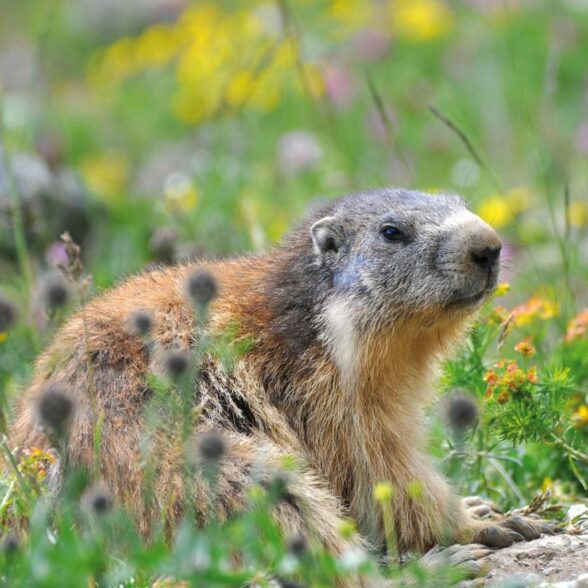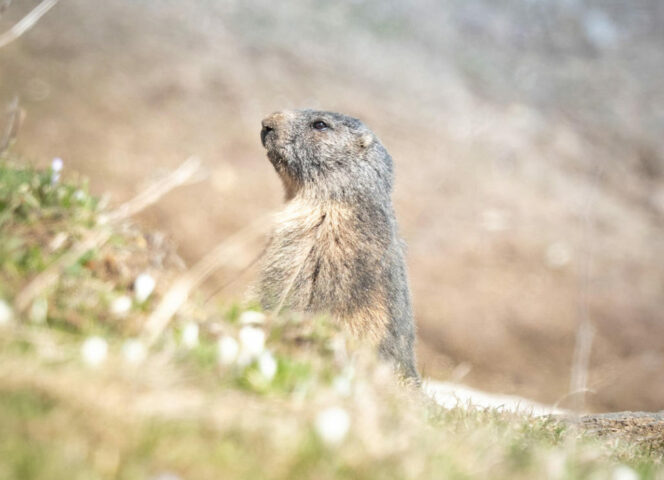You may hear the groundhog before you see it! He'll have spotted you from afar, and when you approach, he'll probably scurry off to hide in his burrow. But if you're patient and quiet, she'll soon come out and you can admire her in peace.
With a clear view to watch out for predators, her "home" is a burrow she's dug, where she takes refuge in case of danger after warning everyone with her distinctive whistle. Most of the time, she stays outside to feed on roots, leaves and flower stems, or to bask on a rock in the sun.

